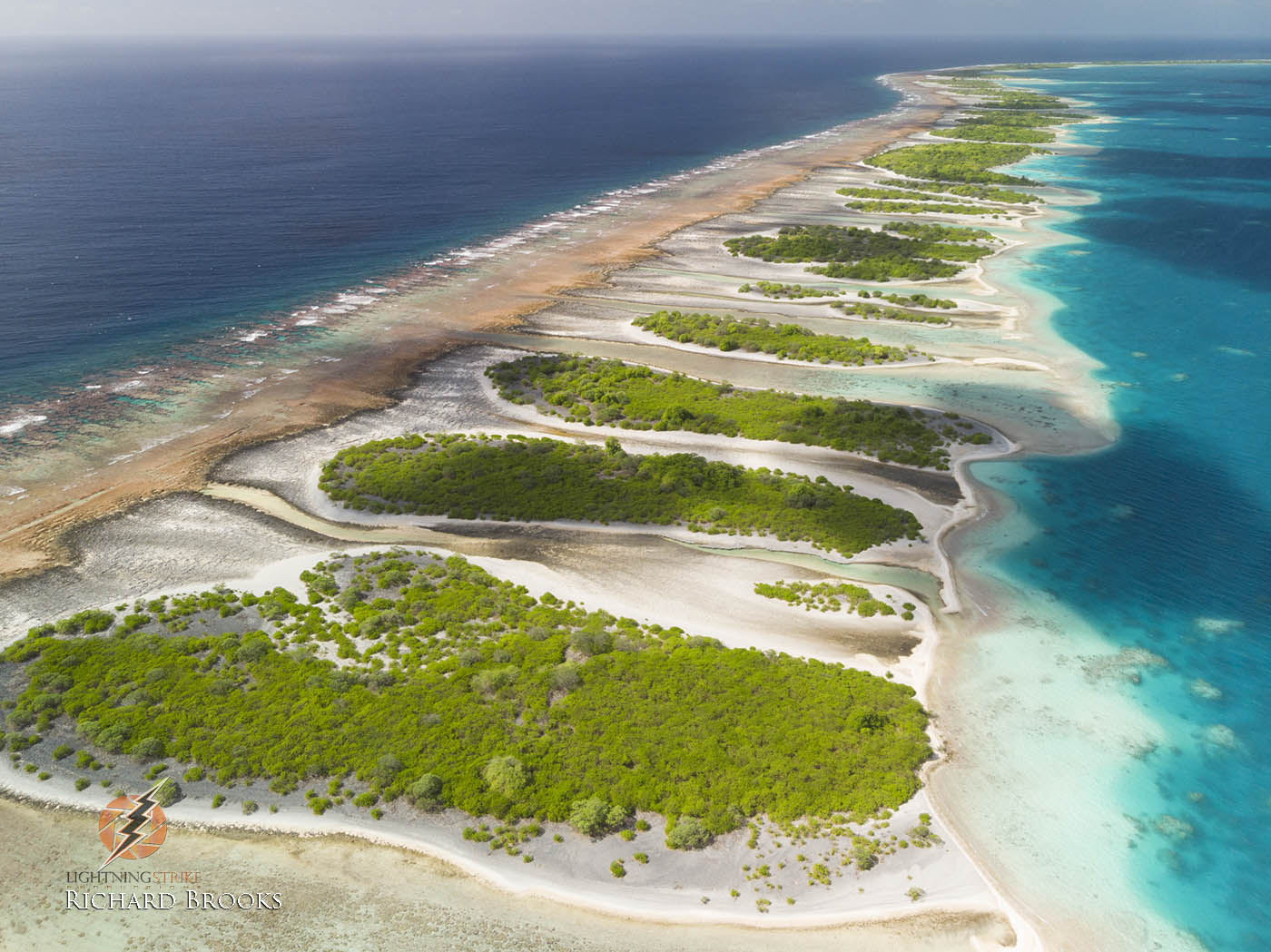Motus and Hoas

Richard Brooks, Lightening Strike Media Productions, Palau
We had a quick visit to Orona, with only two days in the water to explore the reefs of this atoll. Above water, Orona is larger than Nikumaroro and has a beautiful series of motus (small islands) and hoas (channels) on the north coast that serve as the primary drainage points for the lagoon.
A small team of Richard, Pat, Burangke, and Charlie landed through a human-made cut near the old village here. They were able to explore the remains of a copra (coconut) farming operation that was active on Orona until the early 2000s. Thanks to light winds, Richard was able to launch his drone and capture some spectacular images of the motu complex that reveal the numerous linkages between the atoll’s lagoon and the open sea.
Unlike the other reefs we have visited so far, there is a fair bit of coral mortality on Orona. Whether we can pin this on the 2015 El Nino will have to wait until we have analyzed our data and compared with previous years. Nevertheless, the reefs are not a barren graveyard. They are extensively covered in bright pink crustose coralline algae (CCA), a key contributor to reef growth and an important substrate for the settlement of juvenile corals. We also observed numerous large schools of herbivores grazing on turf algae, which helps keep it from overgrowing the remaining corals.
Another key objective of our science mission is to uncover some of the natural biological processes on these islands that may help the corals recover from bleaching events . As part of my postdoctoral research in the Cohen Lab at WHOI, I will be analyzing tissue samples from several species of coral to understand how their nutrition changes across the oceanographic seascape of PIPA. Essentially, I want to know how much the corals are eating.
Corals can obtain energy from two sources, their symbiotic algae or by capturing particles floating in the water. This second mode of nutrition, termed heterotrophy, is very important for coral growth and recovery from bleaching. By collecting samples of living coral, we can use chemical analyses to understand how the corals in PIPA are balancing these two types of nutrition in relation to food availability. Corals that live on reefs with more food and are able to take advantage of this planktonic buffet may be more likely to survive and recover from future bleaching events. So, we’re hoping we collected some fat, happy corals on Orona!